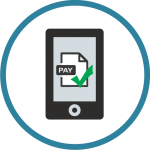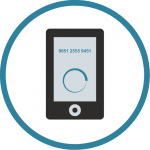
Louis Vuitton has experienced a significant data breach impacting customers in at least five countries: Taiwan, Hong Kong, the United Kingdom, South Korea, and Turkey. Below are the key facts of the incident, details on what was compromised, and actionable recommendations for consumers and businesses.
Timeline of the Louis Vuitton Data Breach and Latest Developments
In early July 2025, Louis Vuitton reported a major cybersecurity incident involving customer data across multiple countries. The breach was first revealed by the South Korea branch on July 2 after unauthorized access was detected, likely originating in June.According to internal investigations, hackers exploited unauthorized entry points to steal customer information. Louis Vuitton emphasized that no financial information, such as bank account details, was exposed, and stated that they had promptly taken steps to enhance security.
Following the South Korean report, LV branches in the UK, Turkey, Taiwan, and Hong Kong also detected suspicious login activity on the same day and issued public statements confirming unauthorized access to customer data. Notices were sent to affected users. Exposed information included names, contact details, gender, nationality, email addresses, purchase history, and shopping preferences. Most recently, Louis Vuitton Australia confirmed on July 22 that customer information there was also impacted by the breach.
Notably, although LV’s headquarters became aware of the Hong Kong breach on July 2, it did not notify Hong Kong’s Privacy Commissioner for Personal Data (PCPD) until July 17—nearly a two-week delay. The PCPD estimates roughly 419,000 individuals were affected, with leaked data including sensitive identifiers like passport numbers and birth dates.The agency has launched an investigation into whether LV’s delayed reporting violated local data protection laws, though no formal complaints have been filed as of yet.
The fact that multiple regional offices detected anomalies simultaneously suggests that LV’s internal systems may be interconnected across countries. This raises concerns that the attack could have had a broader global impact, though no additional affected regions have been confirmed at this time.
What Should LV Customers Do After a Data Breach?
4 Key Steps to Protect Yourself and Minimize Risk
Receiving a data breach notification can be alarming, but prompt and informed action is crucial to protecting your digital identity and finances.
Here are four steps to respond effectively and minimize risk:
1. Verify the Legitimacy of the Notification to Avoid Scams
Hackers often take advantage of data breaches to launch phishing attacks. Be cautious of emails or text messages claiming to be from Louis Vuitton. Do not click on links directly from these messages. Instead, visit the official Louis Vuitton website or contact their verified customer service channels to confirm whether the notification is real.
With access to your personal data, cybercriminals may also impersonate company representatives, government agencies, or even friends and family to scam you. Always be skeptical of unexpected calls or messages asking for personal information, OTP codes, or banking credentials.
If you receive a suspicious message, consider contacting local law enforcement or a consumer protection agency for guidance.
2. Change Your Passwords and Enable Two-Factor or Multi-Factor Authentication
If your Louis Vuitton account uses the same password as other platforms—such as Gmail, LINE, or social media—you should change those passwords immediately.
Enable two-factor or multi-factor authentication (2FA/MFA) wherever possible.. While Louis Vuitton has not reported any leaked passwords at this time, taking these steps helps prevent attackers from using exposed personal information to break into your other accounts.
3. Monitor Your Bank Accounts and Credit Card Activity
Even though Louis Vuitton has stated that no payment information was compromised, it’s still wise to closely monitor your credit card, bank accounts, and digital payment platforms for any suspicious activity.
If you notice unfamiliar transactions or unexpected balance changes, contact your financial institution immediately. For added peace of mind, you may also consider proactively requesting a new credit card number.
4. Keep All Notifications and Communication Records
Save all emails from Louis Vuitton, communication with customer service, and records of any unusual financial activity, as these may be required if you need to file a claim or seek compensation.
Remember that the impact of a data breach can surface months later. Hackers often resell stolen data on the dark web or exploit it gradually through various scams. Continuously monitoring your accounts and financial activities is an essential part of long-term risk management.
How Can Businesses Prevent Data Breaches? Four Key Security Lessons from the Louis Vuitton Incident
The Louis Vuitton breach shows that even leading luxury brands are vulnerable to major cyberattacks if a single access point is left unprotected. Failing to prioritize cybersecurity can lead to reputational damage, financial penalties, customer loss, and legal action.
So, how can companies strengthen their cybersecurity defenses and avoid repeating such mistakes? Here are four essential measures recommended by cybersecurity experts at Lydsec:
1. Implement a Zero Trust Security Framework
Traditional security models assume that internal systems are trustworthy. Modern cybersecurity, however, follows a “never trust, always verify” principle. Every access request—from employees or external vendors—must be authenticated and authorized, with all actions logged for accountability.
Organizations should also enforce the principle of least privilege, ensuring that employees can only access the data necessary for their specific roles.
Not sure where to start with Zero Trust?
Keypasco ZTNA is a cybersecurity solution built on Zero Trust Network Access principles. Developed in line with U.S. NIST and CISA standards, as well as Taiwan’s government Zero Trust framework, it is certified by the National Institute of Cyber Security. Keypasco ZTNA employs identity verification, device authentication, and trust inference technologies to help organizations achieve comprehensive and robust cybersecurity protection.
- Identity Verification: Offers multi-factor authentication, including FIDO U2F and FIDO2 solutions.
- Device Authentication: Scans device attributes and software information, storing them on Keypasco servers for device validation.
- Trust Inference: Uses artificial intelligence to analyze behavior, continuously assess risk, and trigger additional authentication when needed.
Keypasco meets global standards and is trusted by government, finance, healthcare, smart building, and high-tech organizations worldwide. As cyber threats evolve, we remain committed to empowering organizations with robust, future-ready security solutions. This ensures that they stay compliant, resilient, and ahead of the curve in a rapidly changing digital landscape.
2. Conduct Regular Penetration Testing and Security Audits
Engage third-party ethical hackers or cybersecurity firms to perform penetration testing and identify system vulnerabilities. Conduct comprehensive security audits regularly and submit detailed reports to internal governance teams and senior management. This process helps ensure continuous improvement and risk mitigation.
3. Deploy SIEM Systems and Anomaly Detection
Utilize Security Information and Event Management (SIEM) tools to collect real-time logs from servers, user accounts, and applications. When unusual activities—such as late-night logins, large data downloads, or geographic login anomalies—are detected, the system can instantly trigger alerts and enforce blocking measures to prevent potential breaches.
4. Prioritize Employee Cybersecurity Training and Phishing Simulations
Many security breaches stem from internal mistakes or social engineering attacks, such as phishing emails. Companies should regularly conduct simulated phishing tests and provide cybersecurity training to raise employee awareness about data security and potential risks. Strengthening staff vigilance helps prevent internal account compromises and unauthorized access that could lead to larger cyberattacks.
⚠️ Cybersecurity Is Not a Cost—It’s Trust and Brand Equity
The Louis Vuitton incident clearly shows that customers care less about brand prestige and more about one crucial question: Is my data safe when I shop here? Once trust is broken, even the most prestigious brands can quickly lose market share.
Therefore, companies must elevate cybersecurity to a board-level priority and treat it as a core competitive advantage.













